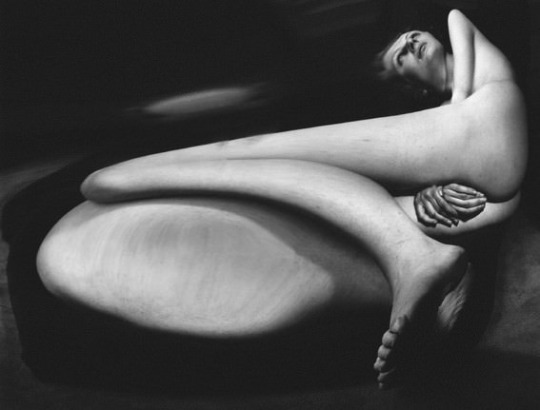Don't wanna be here? Send us removal request.
Photo

Apartment complex, Ivry-Seine, France, 1969-75 architect: Jean Renaudie, Renée Gailhoustet #brutgroup #JeanRenaudie https://www.instagram.com/p/CYhVJ71sPcO/?igshid=NGJjMDIxMWI=
85 notes
·
View notes
Text

Martin Krippenberger
3 notes
·
View notes
Text
"Relativity" è una stampa litografica dell'artista olandese Maurits Cornelis Escher, stampata per la prima volta nel dicembre 1953. (27.7 cm × 29.2 cm)
L'artista riesce a comunicarci un significato profondo: esistono più piani della realtà, di cui noi nemmeno possiamo accorgerci, ma di cui dobbiamo serenamente accettare l'esistenza. Un ambiente dove si muovono e vivono personaggi simili a pedoni degli scacchi ed in cui una parete diventa un pavimento, una finestra una botola, le scale stesse cambiano verso a seconda di come vengono vissute. Perché lo spazio viene prima di tutto vissuto dai personaggi e sono loro, con l’impressione del movimento e dell’azione, che danno l’idea del punto di fuga, della prospettiva, o meglio, della molteplicità delle prospettive. Perdersi nel paradosso è facile, a volte anche rilassante, perché ci porta a seguire un movimento perpetuo dove non si ritrova più l’inizio del ragionamento e non si vede la motivazione della fine. Ci perdiamo nel moto lento di un mondo immaginario in cui tutto è relativo, ovvero non esiste un unico punto di vista, non esiste la ragione o il torto, esistono le ragioni di ognuno, la vita di ognuno, che non si incontrano, non si capiscono, sono semplicemente differenti. Così dal paradosso passiamo all’incomunicabilità, perché l’impossibilità di toccarsi e di vivere in una dimensione che non è la loro, rende i personaggi assolutamente muti e incapaci di comprendere le realtà differenti che li circondano. Però in questo percorso visivo Escher ci fa intravedere una speranza: una coppia che cammina abbracciata. Quindi esiste la possibilità di ritrovarsi nella prospettiva, di muoversi sullo stesso pavimento, perché l’amore fa ritrovare le strade, è il punto d’incontro per un vista comune. Perché quando si cammina in due si arriva sempre prima.

"Adoriamo il caos perché amiamo produrre l'ordine." ~ M. C. Escher
~ Caos Stabile.
2 notes
·
View notes
Text
Wiener Secession
Die Wiener Secession, genauer Vereinigung bildender Künstler Österreichs, ist eine Vereinigung bildender Künstler in Wien aus der Zeit des Fin de siècle. Davon abgeleitet wird auch die Wiener Variante des Jugendstils als Secessionsstil oder Wiener Jugendstil bezeichnet.
Die Wiener Secession wurde am 3. April 1897 von Gustav Klimt, Koloman Moser, Josef Hoffmann, Joseph Maria Olbrich, Max Kurzweil, Josef Engelhart, Ernst Stöhr, Wilhelm List, Adolf Hölzel und anderen Künstlern als Abspaltung (Secession) vom Wiener Künstlerhaus gegründet, da die Künstler den am Künstlerhaus vorherrschenden Konservatismus und traditionellen – am Historismus orientierten – Kunstbegriff ablehnten. Vorbild war die Münchner Secession.
https://de.wikipedia.org/wiki/Wiener_Secession
secessionistischen Konzept des Gesamtkunstwerks

Die Wiener Secession ist bis heute ein wichtiges Ausstellungshaus für zeitgenössische Kunst in Wien.
6 notes
·
View notes
Text
One of the most important alchemical symbols of Renaissance Christian alchemy was the virgin Mary squeezing her tiddies into a bowl
26K notes
·
View notes
Photo

Vast metaphysical interior, 1917, Giorgio de Chirico
Medium: oil,canvas
111 notes
·
View notes
Photo

Paris, a Rainy Day, 1877, Gustave Caillebotte
Medium: oil,canvas
139 notes
·
View notes
Photo

Gift, Man Ray, 1921 (replicated in a 1970 edition of 11), Minneapolis Institute of Art: Decorative Arts, Textiles and Sculpture
edition 10 of 11, series II; recreation of the original (lost) object of 1921; old style iron with single row of 14 tacks afixed to bottom center, painted in black Iron Size: 6 x 3 ½ x 5 in. (15.24 x 8.89 x 12.7 cm) Medium: Cast iron, tacks
https://collections.artsmia.org/art/5343/
63 notes
·
View notes
Photo

Still life with Bottle of Bass, 1914, Georges Braque
Medium: charcoal,collage,ink,cardboard
5 notes
·
View notes
Text




Hungarian-born photographer, André Kertész (1894-1985).
3K notes
·
View notes
Text
Im Unterschied zum satirischen Dadaismus wurde im Surrealismus eine neuartige Sicht der Dinge propagiert. (Surrealismus Wikipedia)
Surrealismus entwickelte sich aus dem Dadaismus. (Erstes Surrealistisches Manifest 15. Oktober 1924 )
Beide Bewegungen
0 notes
Photo






Mark Rothko, The Dark paintings Part 3, 1969, Mixed media on canvas or Paper
The simple two-field composition of the Brown and Gray works on paper constitutes another significant development in Rothko’s late work. He asked his studio assistants to staple and tape large sheets of pre-cut paper to wooden boards that could then be placed on an easel. Once the painting process was completed, the tape was removed revealing an edge of unpainted paper around the brown upper and the grey lower sections. Though it is unclear whether this edge was a part of Rothko’s thinking from the outset, some way into the series he began to stress its conceptual importance.
Rothko began work on the series in late 1968. Earlier in the year he suffered an aortic aneurysm that forced him to stop working altogether for several weeks. During the summer, when he had sufficiently recovered to return to his work his doctors recommended that he limit himself to formats no larger than forty inches in height, resulting in a prolific production of exuberantly colorful works on paper. The reduction in color of the Brown and Grays is, therefore, a conscious element of Rothko’s sense of them as a separate series. Almost uniform in format, every adjustment to the fields’ proportions, their tonal hue or the gestural brushwork reveal themselves as meaningful painterly gestures within the self-imposed limitations of the composition’s simple structure.
(Rothko’s paintings of this year are, in scans, sometimes a little difficult to differentiate from one another as amounts of brown or purple change from photo to photo.Most of the 1969 “Two color” dark paintings are contained in these three sets others can be found under the tags “dark rothko” and”1969″. If any sharp eyed person sees a repeat that I missed within the three sets, please point it out.)
2K notes
·
View notes
Photo

Big fishes eat small fishes, 1556, Pieter Bruegel the Elder
Medium: ink,paper,pen,brush
40 notes
·
View notes



